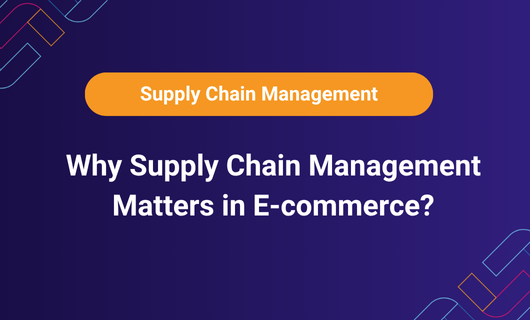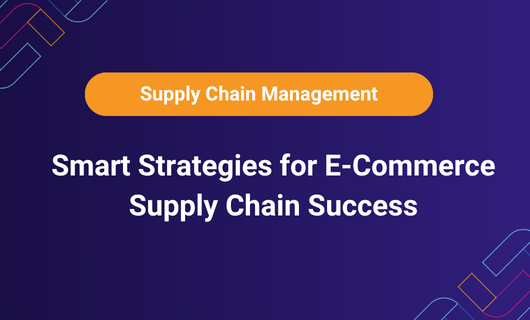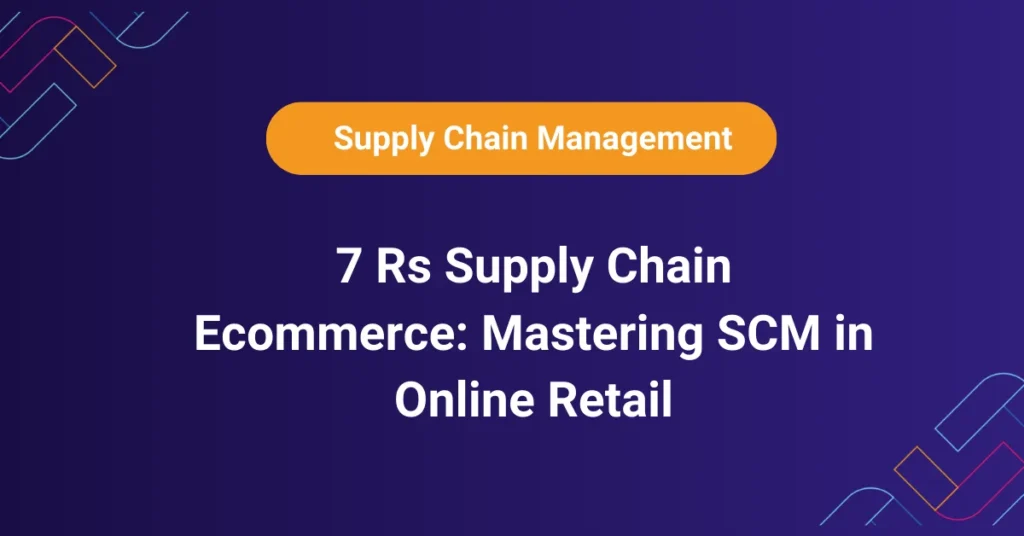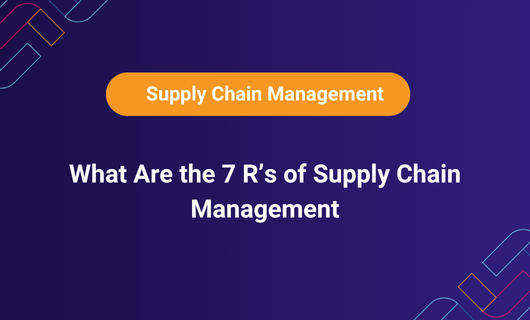The Real Cost of a Poor Supply Chain
In today’s fast-paced ecommerce world, a single late delivery or stockout can lead to a lost customer and a bad review that turns away dozens more. That’s the hidden reality of not having a solid supply chain system in place.
Understanding the importance of supply chain management in e-commerce is no longer optional. It’s a make-or-break factor that directly impacts your customer satisfaction, profit margins, and long-term scalability.
A Brankit client, an apparel retailer, reported a 22% drop in repeat customers due to delayed shipments before switching to our integrated fulfillment system.
Let’s explore how an efficient e-commerce supply chain works, what challenges to watch out for, and how Brankit helps online retailers gain a competitive edge.

Why Supply Chain Management Matters in E-commerce?
So, what is supply chain management in e-commerce? It’s the coordinated network of sourcing, warehousing, inventory, logistics, and final delivery that gets a product from manufacturer to customer, seamlessly and efficiently.
A smart supply chain for e-commerce isn’t just about shipping speed. It’s about syncing your demand forecasting, stock levels, order accuracy, and vendor coordination to reduce costs and delight customers.
Done right, it becomes your secret weapon for growth.
Key Components of an Efficient E-Commerce Supply Chain
To thrive in a competitive market, your e-commerce supply chain must operate like a well-oiled machine. Key components of supply chain management in e-commerce include:
-
- Inventory Management
Real-time tracking of stock levels across channels.
(Keyword: inventory in e-commerce supply chain)
- Inventory Management
-
- Warehouse Operations
Organized, tech-driven storage and order fulfillment.
- Warehouse Operations
-
- Logistics and Delivery
Speed, transparency, and flexibility in shipping options.
- Logistics and Delivery
-
- Technology Integration
Systems like ERPs, CRMs, and ecommerce platforms must communicate to reduce errors and streamline operations.
- Technology Integration
-
- Returns Management
Efficient handling of reverse logistics to protect customer trust and minimize losses.
- Returns Management
Each part plays a critical role in avoiding delays, overselling, or customer dissatisfaction.
According to Gartner’s SCM Framework, real-time inventory tracking is one of the top 3 priorities for digital supply chain leaders in 2025.
Benefits of Supply Chain Optimization for Online Stores
The advantages of supply chain management in e-commerce are tangible and transformative:
Faster Order Fulfillment
Streamlined workflows speed up delivery times.
Lower Inventory Holding Costs
Smart forecasting reduces overstock and understock issues.
Improved Analytics and Forecasting
Data visibility allows for smarter business decisions.
Enhanced Customer Experience
Accurate shipping estimates and order accuracy build brand loyalty.
Inventory Management
Keep your stock in sync across all sales channels with real-time updates.
With the right ecommerce supply chain process, your online store becomes more scalable, responsive, and cost-efficient.
Brankit-enabled retailers saw a 40% reduction in shipping errors and a 28% improvement in delivery time within 3 months.
Common Challenges in E-commerce Supply Chain
Let’s face it: managing a digital supply chain comes with its fair share of roadblocks. Common challenges in e-commerce supply chain include:
Demand Volatility
Predicting consumer behavior is increasingly difficult.
Inventory Misalignment
Overstocking ties up capital; understocking loses sales.
Complex Multi-Channel Management
Juggling multiple sales platforms increases the risk of order errors.
Rising Shipping Costs
Margins are tighter with fluctuating delivery costs.
Limited Visibility
Manual systems make tracking difficult, especially at scale.
These e-commerce supply chain issues limit growth if not addressed through tech-enabled solutions.

Smart Strategies for E-Commerce Supply Chain Success
Implementing the best ecommerce supply chain strategies can future-proof your operations:
-
- Automation and AI Forecasting
Use predictive analytics to forecast demand and stock levels.
- Automation and AI Forecasting
-
- Omnichannel Fulfillment
Centralized inventory synced across all channels.
- Omnichannel Fulfillment
-
- Third-Party Logistics Integration
Outsource warehousing and logistics for scalability.
- Third-Party Logistics Integration
-
- Real-Time Dashboards
Use cloud-based software to monitor KPIs.
- Real-Time Dashboards
-
- Technology-Based E-Commerce Integration
Adopt ecommerce integration solutions under supply chain technology to unify platforms like Shopify, WooCommerce, and ERPs.
- Technology-Based E-Commerce Integration
These strategies enable faster fulfillment, fewer errors, and improved profitability. Brankit’s AI-driven forecasting integrates seamlessly with SAP, Shopify, and NetSuite, trusted by over 500 brands globally.
How Brankit Transforms E-commerce Supply Chains?
Brankit offers more than tools; it delivers ecommerce supply chain transformation tailored for growth-driven online stores.
Key Benefits of Brankit:
-
- Optimized Inventory Control
Real-time analytics ensure the right stock at the right time.
- Optimized Inventory Control
-
- High Accuracy Fulfillment
Our systems deliver 99.8% order accuracy at scale.
- High Accuracy Fulfillment
-
- Seamless System Integration
Connect ecommerce platforms, CRMs, and ERPs with zero friction.
- Seamless System Integration
-
- Growth-Focused Infrastructure
Flexible solutions that scale as your business grows.
- Growth-Focused Infrastructure
We simplify your operations so you can focus on selling and scaling, not solving logistics problems.
Talk to Brankit For Your E-commerce Supply Chain Partner
Your e-commerce growth deserves a reliable supply chain foundation.
Ready to streamline your operations?
Book a Free Consultation with Brankit experts.
Want to see results?
Request a Live Demo or check out our success stories.
Frequently Asked Questions
What is supply in e-commerce?
Supply in e-commerce refers to the availability of products that online retailers can offer to customers. It includes sourcing goods from manufacturers, maintaining inventory levels, and ensuring products are ready for order fulfillment through the supply chain.
What is supply chain management in e-commerce?
Supply chain management in e-commerce refers to the end-to-end process of sourcing, storing, managing inventory, fulfilling orders, and delivering products to customers. It ensures smooth coordination between suppliers, warehouses, and logistics to meet customer demands efficiently.
What is ERP in e-commerce?
ERP (Enterprise Resource Planning) in e-commerce integrates business functions like inventory, finance, order processing, and customer service into a single system. It improves data accuracy, automates workflows, and enhances visibility across the supply chain.
What is the supply chain network of e-commerce?
An e-commerce supply chain network consists of interconnected entities such as suppliers, warehouses, fulfillment centers, shipping providers, and retailers. This digital network enables fast, transparent, and scalable delivery of products to customers worldwide.
What is CRM in e-commerce?
CRM (Customer Relationship Management) in e-commerce helps manage customer interactions, sales data, and service history. It improves marketing personalization, enhances customer experience, and supports long-term retention through data-driven insights.





